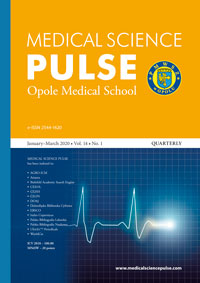Physiotherapeutic management of a patient after craniocerebral trauma in the intensive care unit – a case report
Physiotherapeutic management of a patient after craniocerebral trauma in the intensive care unit – a case report
Author(s): Klaudia Kałuża, Antonina KaczorowskaSubject(s): Health and medicine and law
Published by: Państwowa Medyczna Wyższa Szkoła Zawodowa w Opolu
Keywords: craniocerebral trauma; coma; rehabilitation
Summary/Abstract: Background: Craniocerebral injuries are one of the most common causes of mortality and disability in Poland. The treatment of patients who are in an intensive care unit is based primarily on stabilizing the patient’s general condition as well as basic duties according to the patient’s functioning. Aim of the study: The aim of this study is to demonstrate the importance of early rehabilitation and the role of physiotherapy in recovery after craniocerebral trauma. Case report: The subject was an 18-year-old patient who suffered craniocerebral trauma as a result of a road accident. After losing consciousness, he was in the intensive care unit, where he was placed on a medical ventilator. A properly selected physiotherapeutic procedure was performed. Passive exercises, contracture correction and appropriate positioning were used. To prevent pressure sores, anti-bedsore prophylaxis was implemented. Respiratory therapy played a key role. The goal of respiratory physiotherapy was to improve respiratory function by maintaining proper lung ventilation, increasing chest and diaphragm mobility along with maintainingthe efficiency of respiratory muscles, as well as stimulating effective coughing and evacuation of secretions.The NDT-Bobath concept was used as therapy for spastic tension. The goal of the therapy was to get rid of pathological movement patterns and replace them with physiological patterns. The PNF method, classical and lymphatic massage, polysensory stimulation and music therapy were also used. Conclusions: Early and comprehensive rehabilitation in a patient after craniocerebral trauma is extremely important and determines therapeutic effectiveness. Comprehensive therapy and care are able to prevent a number of complications that threaten the patient as a result of immobilization.
Journal: Medical Science Pulse
- Issue Year: 14/2020
- Issue No: 1
- Page Range: 40-46
- Page Count: 7
- Language: English

